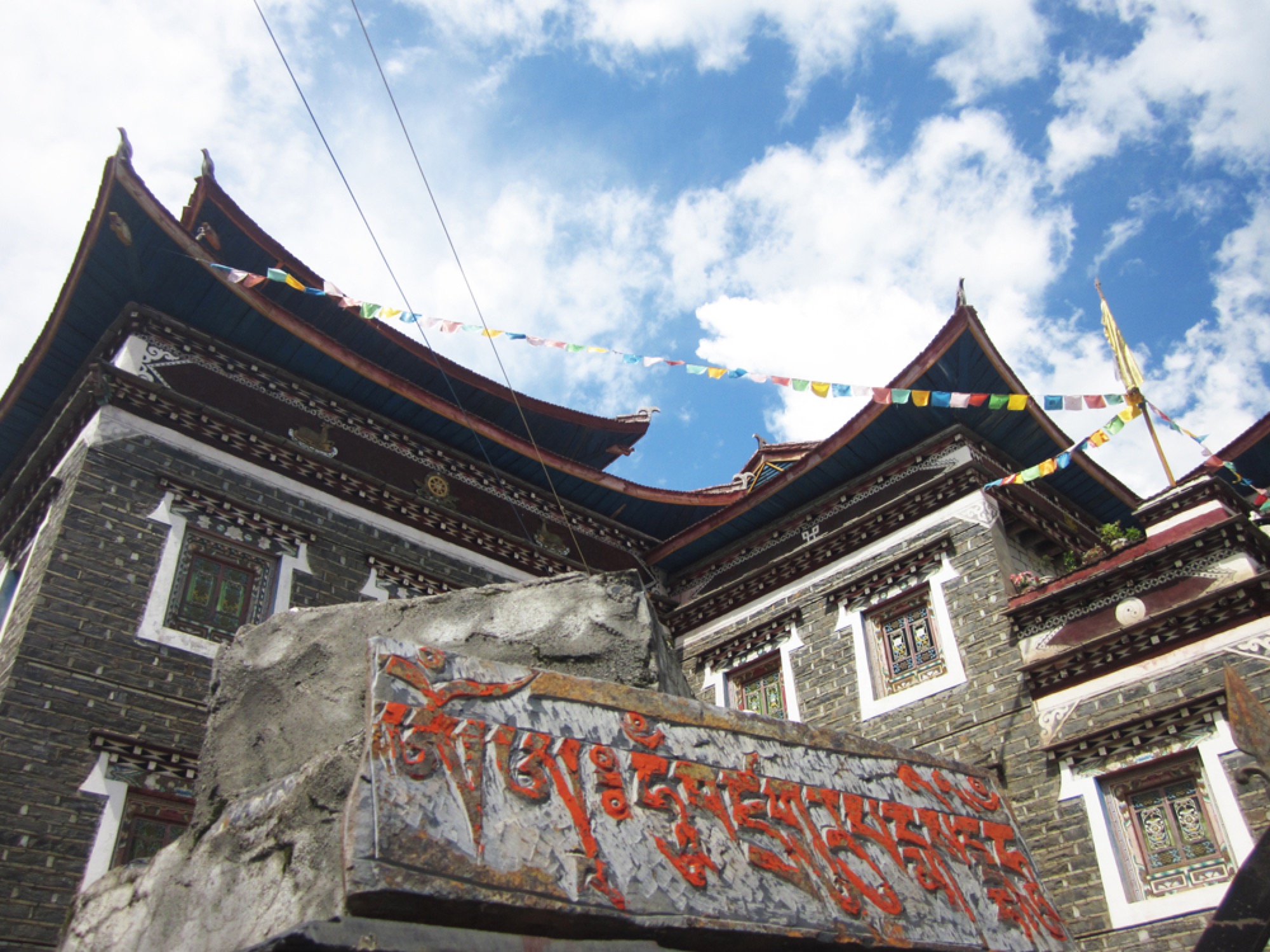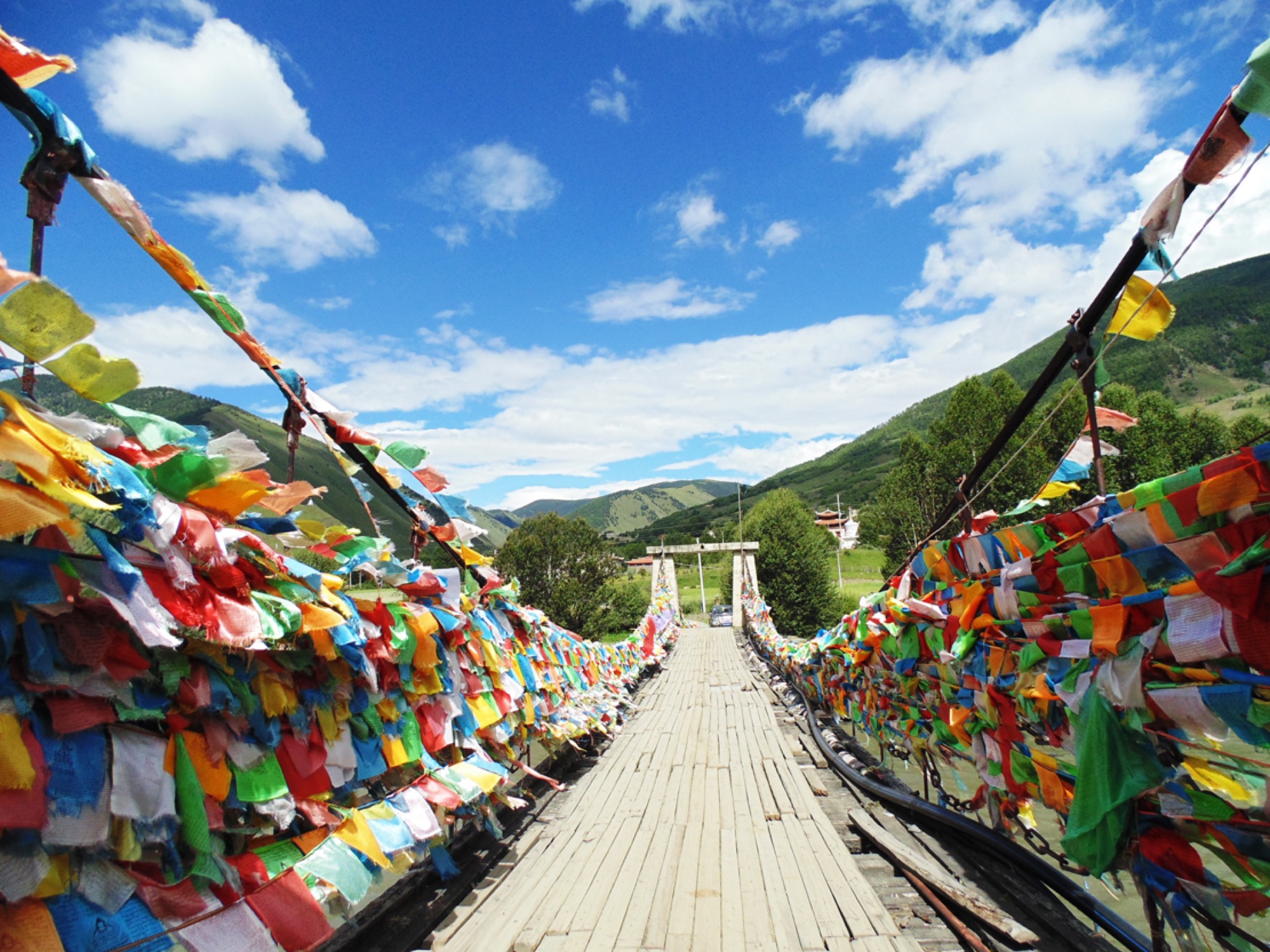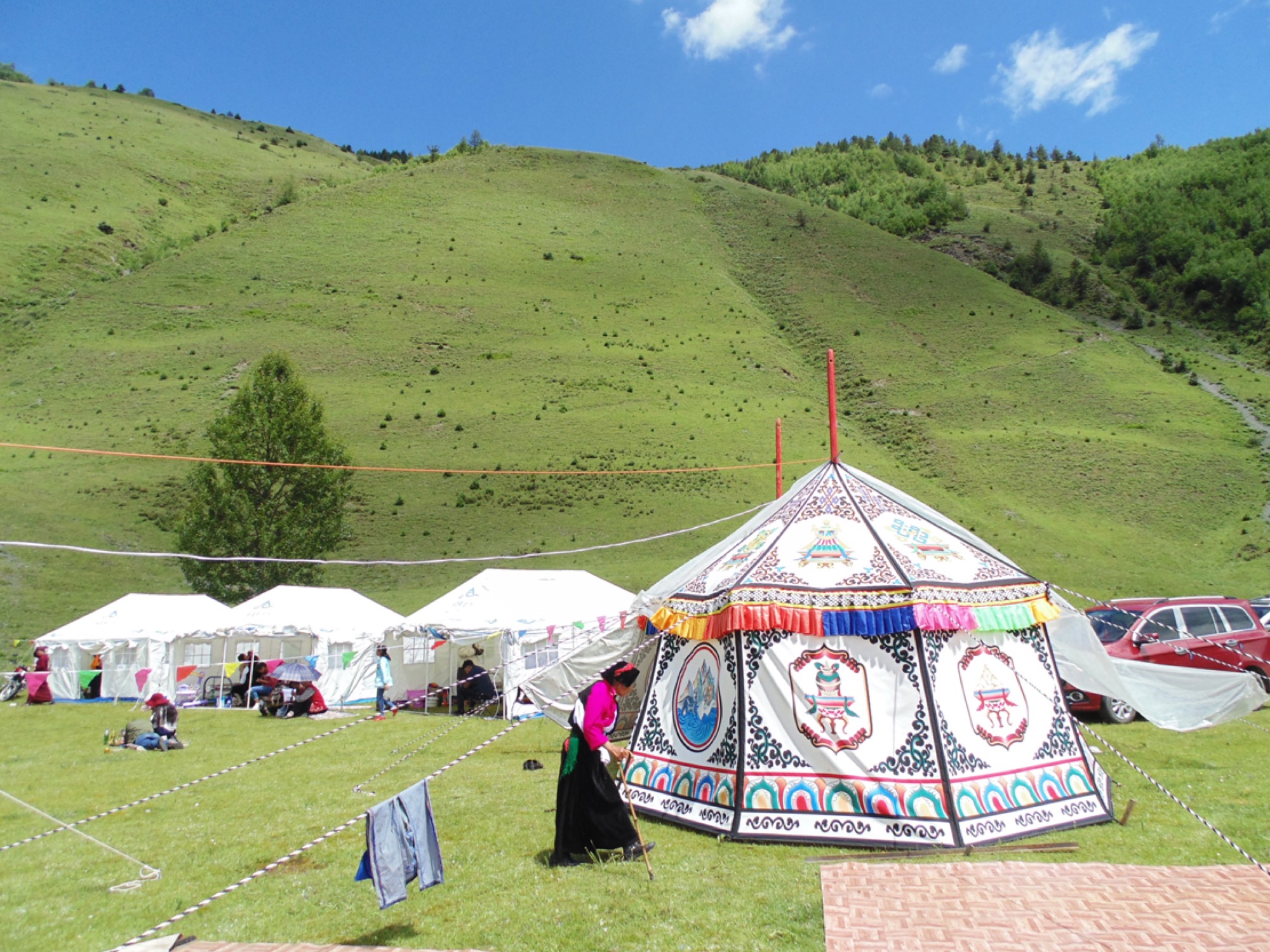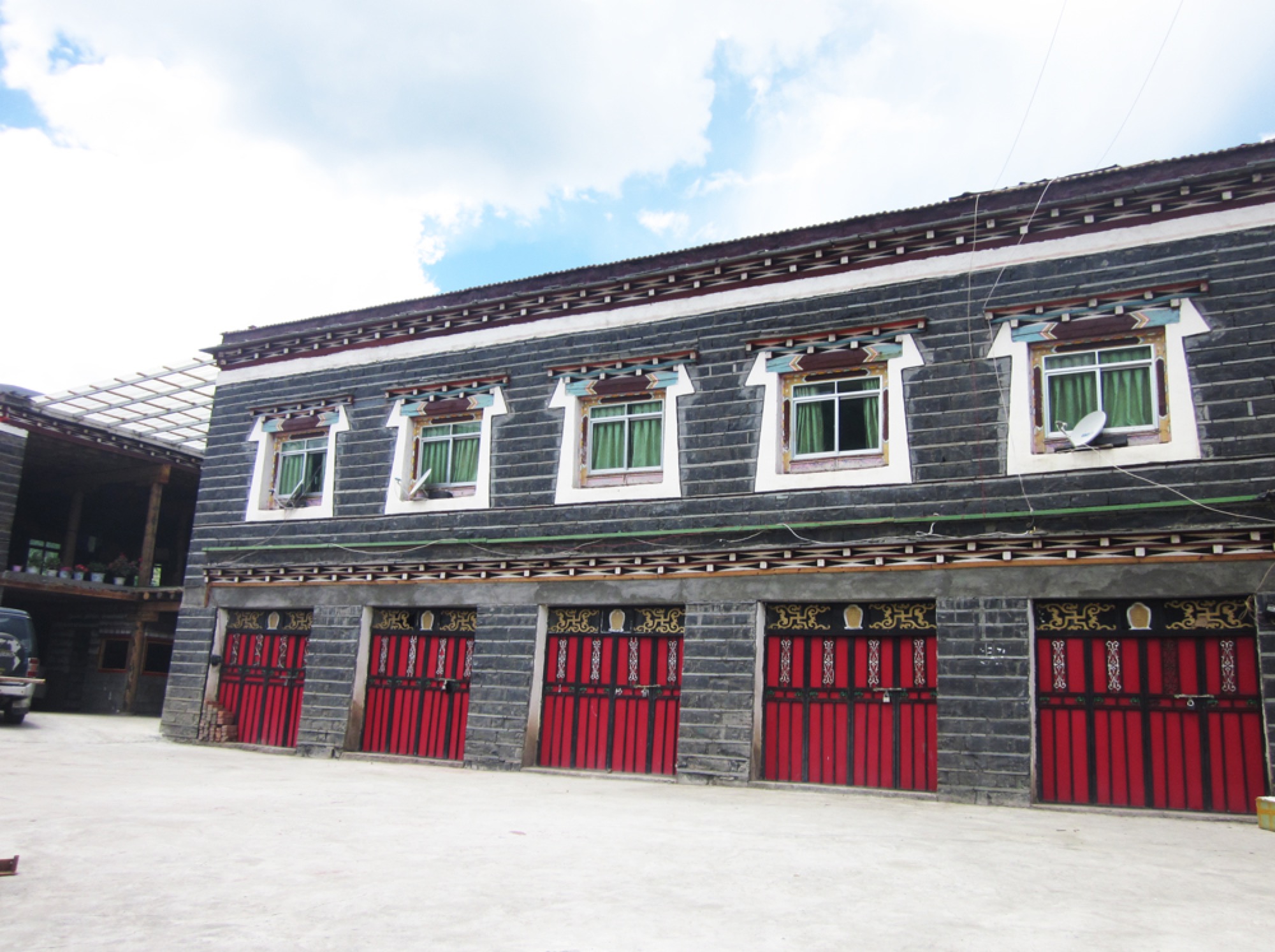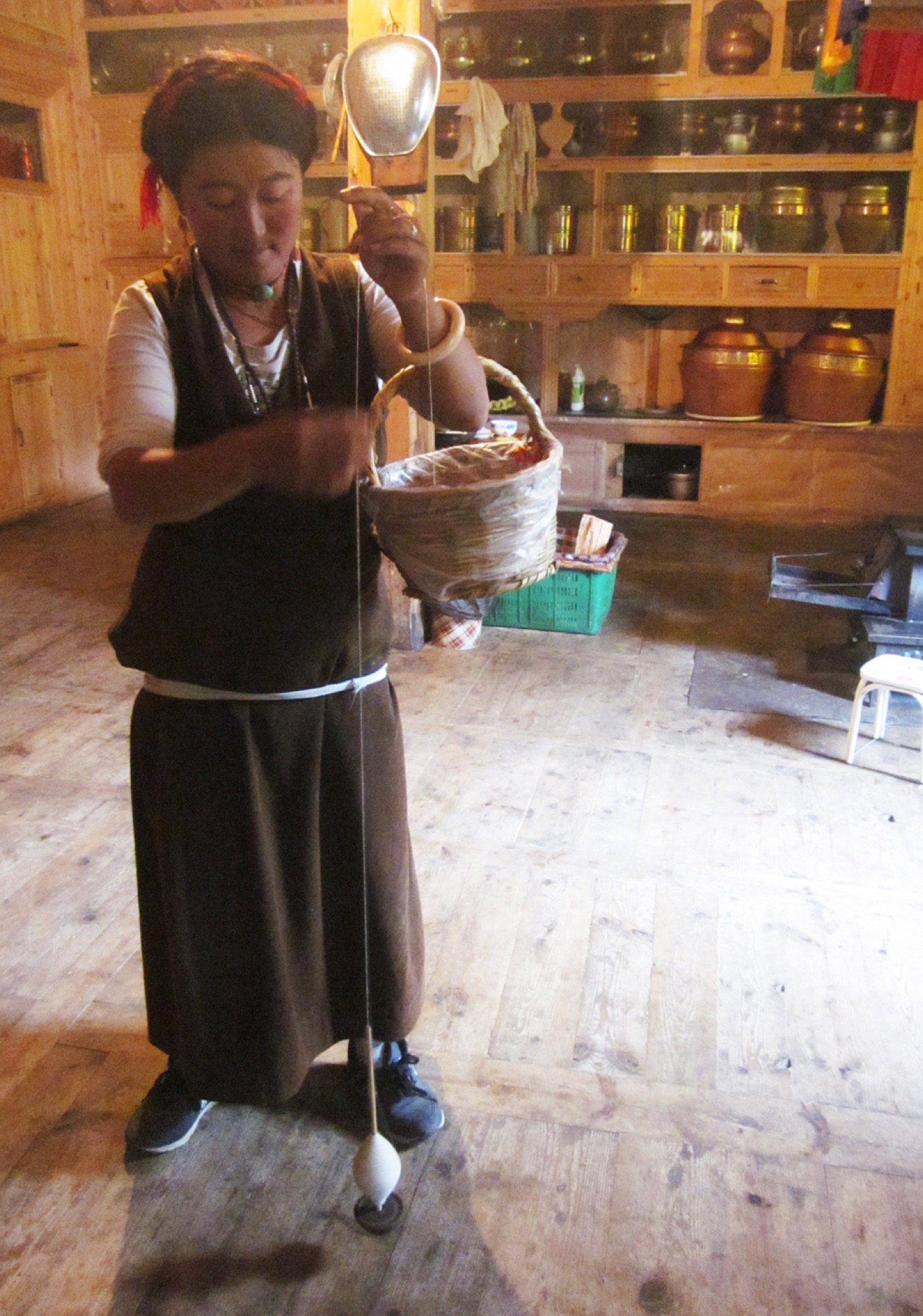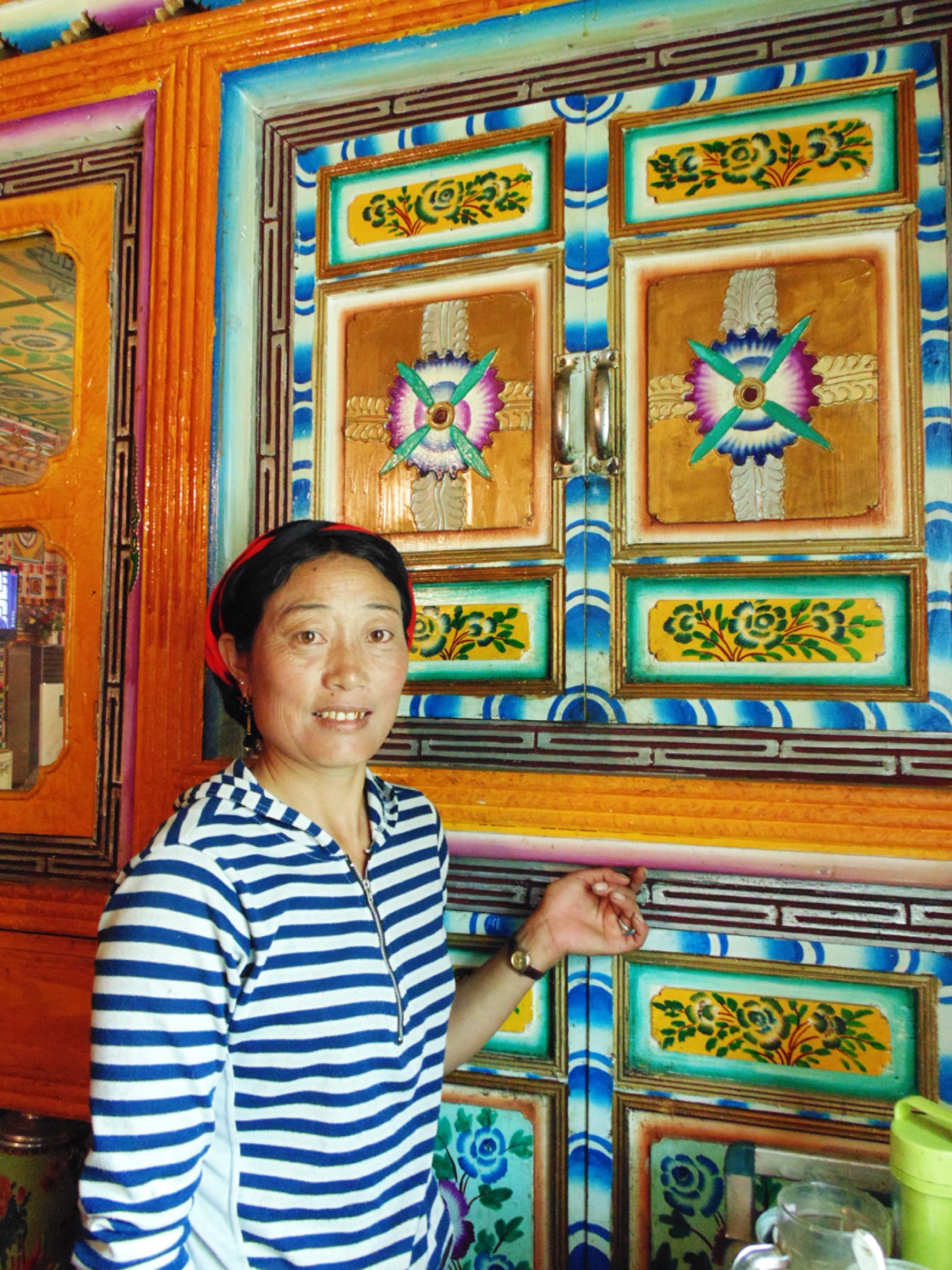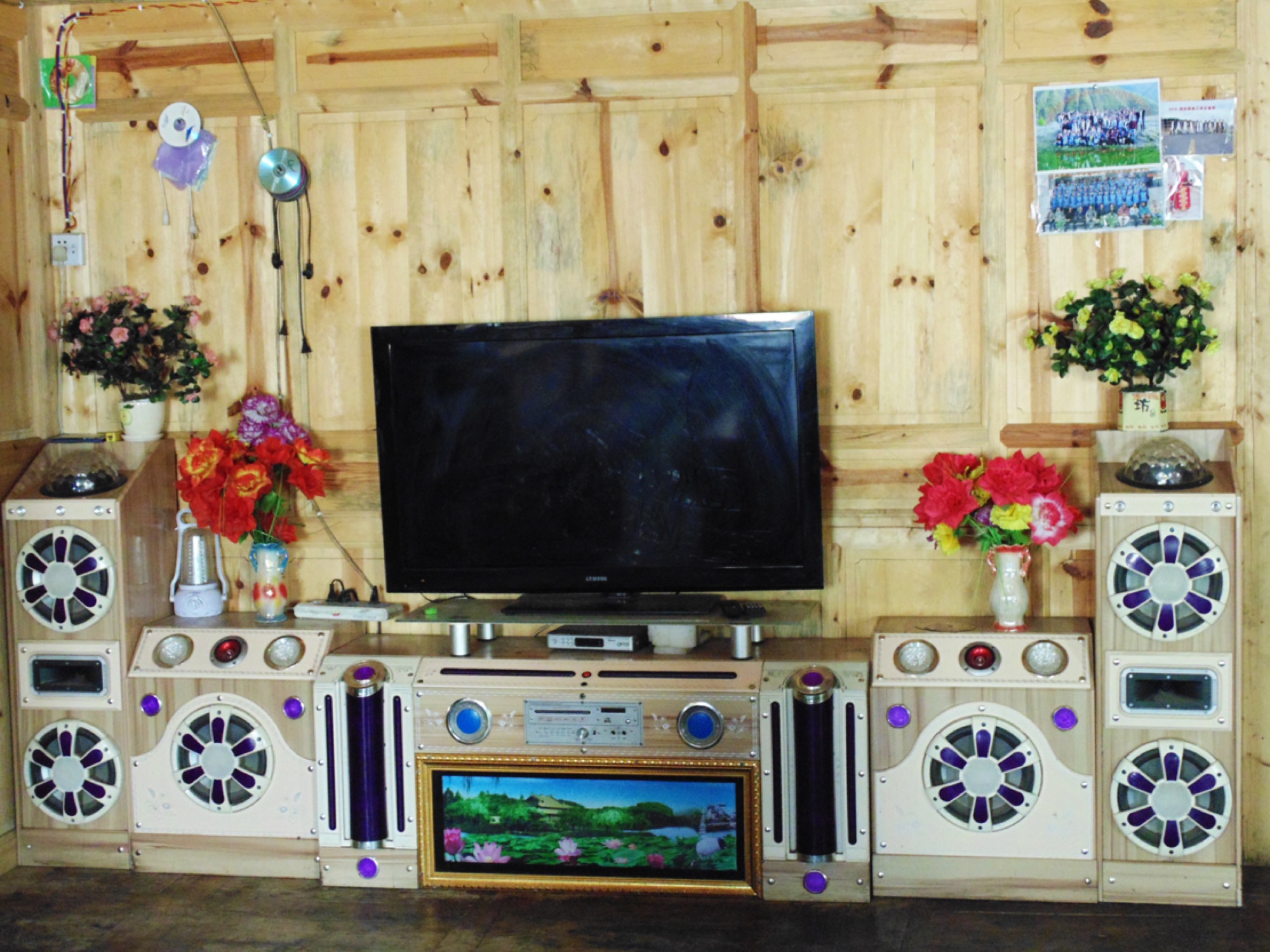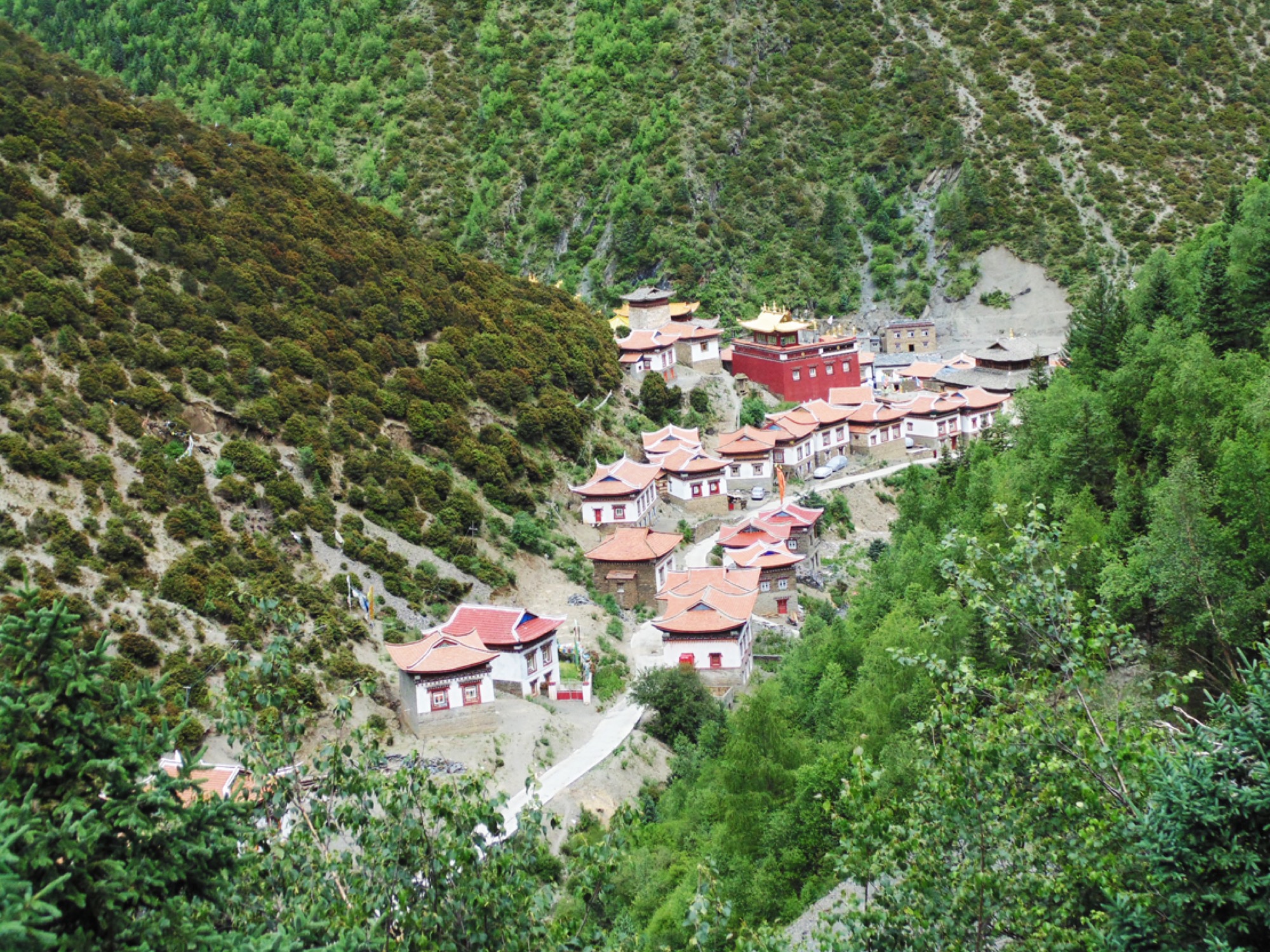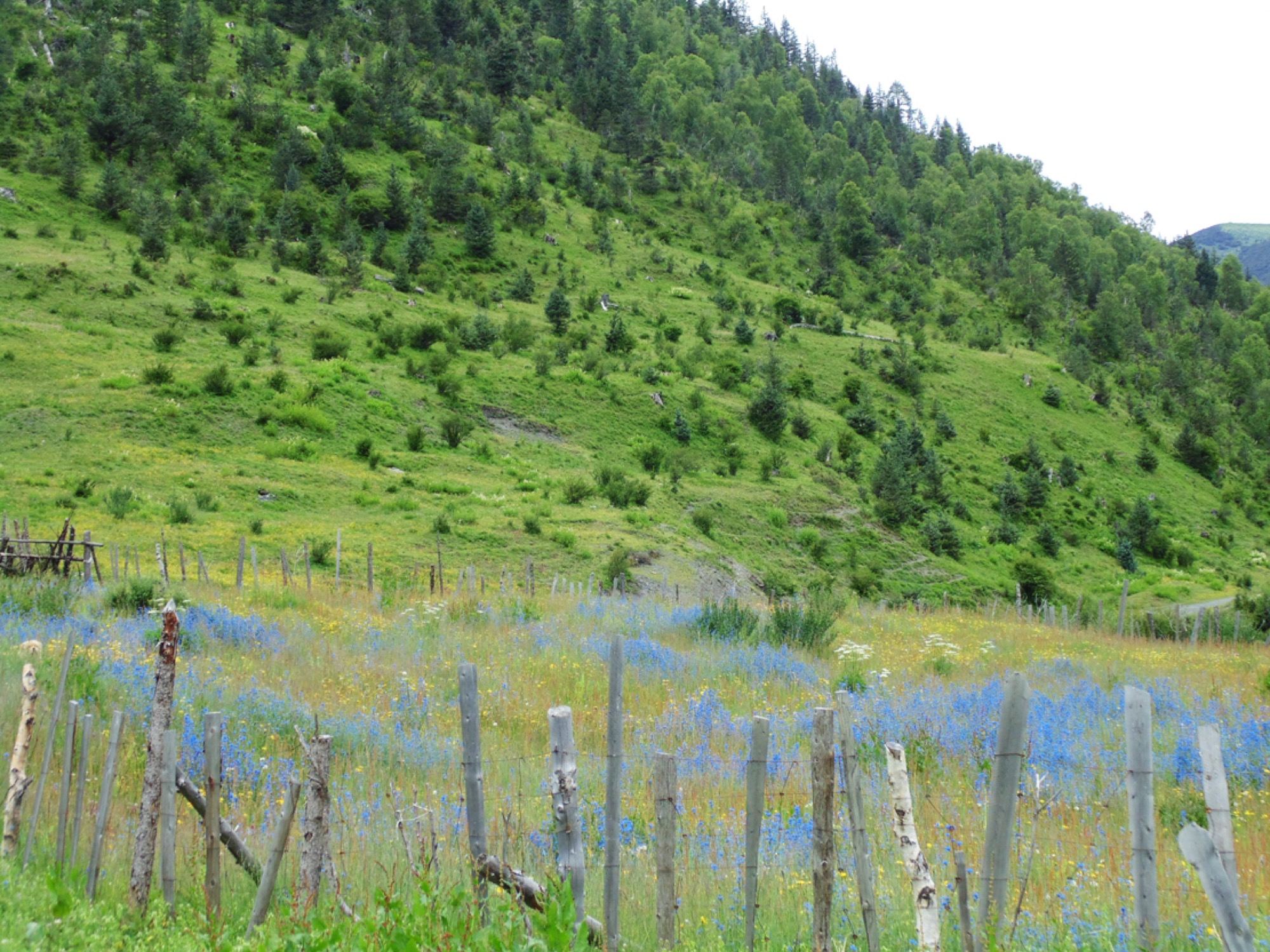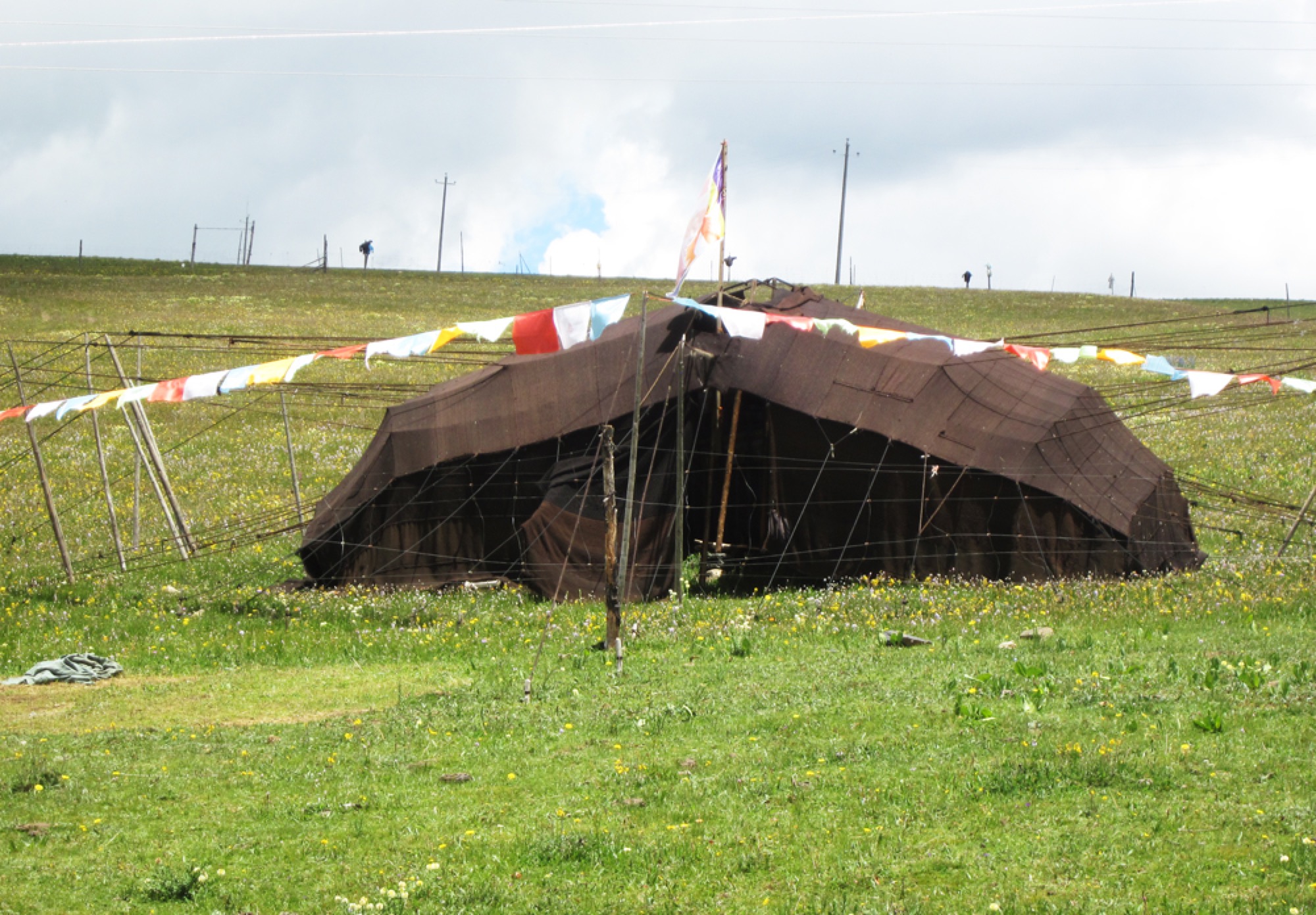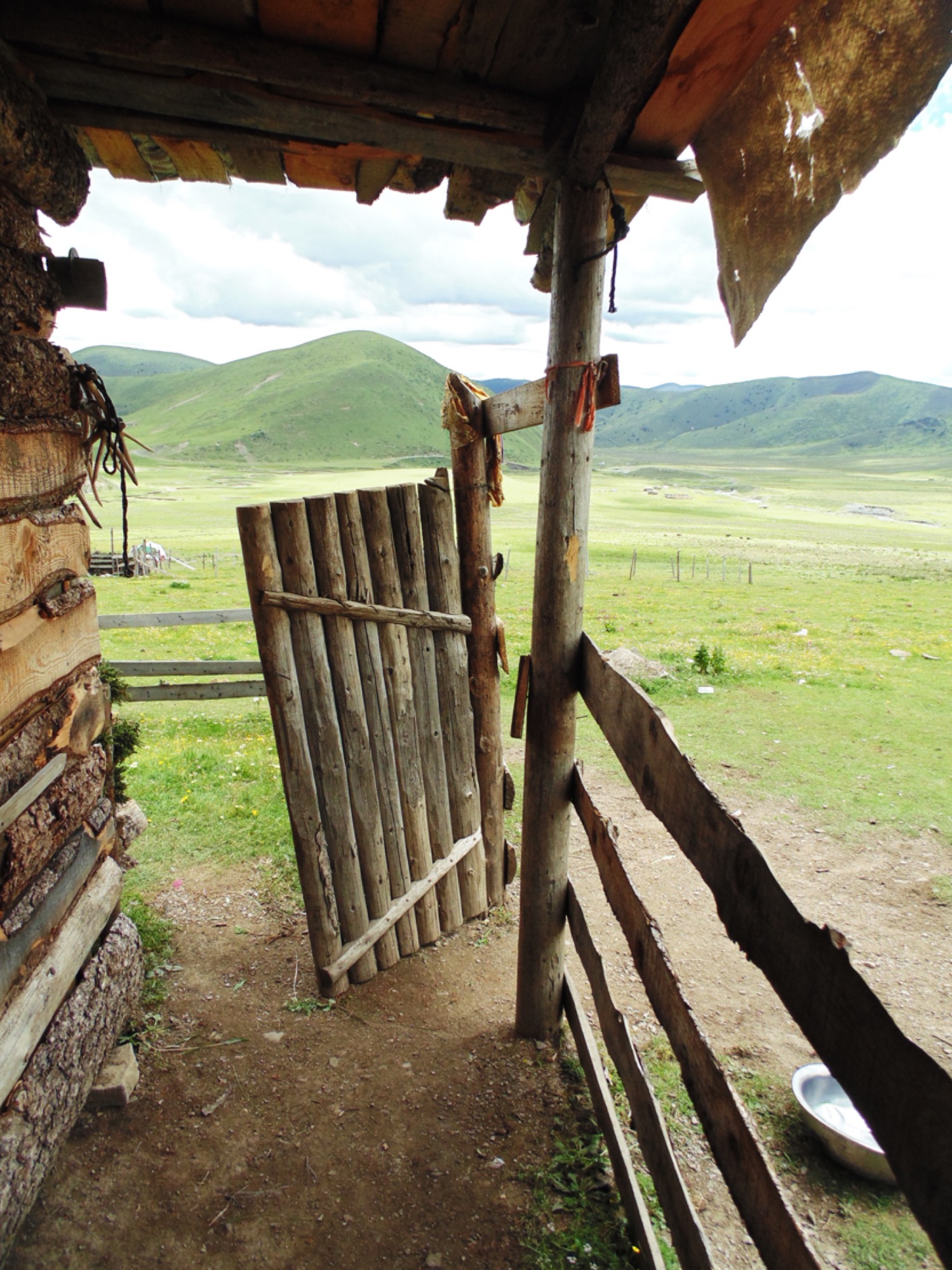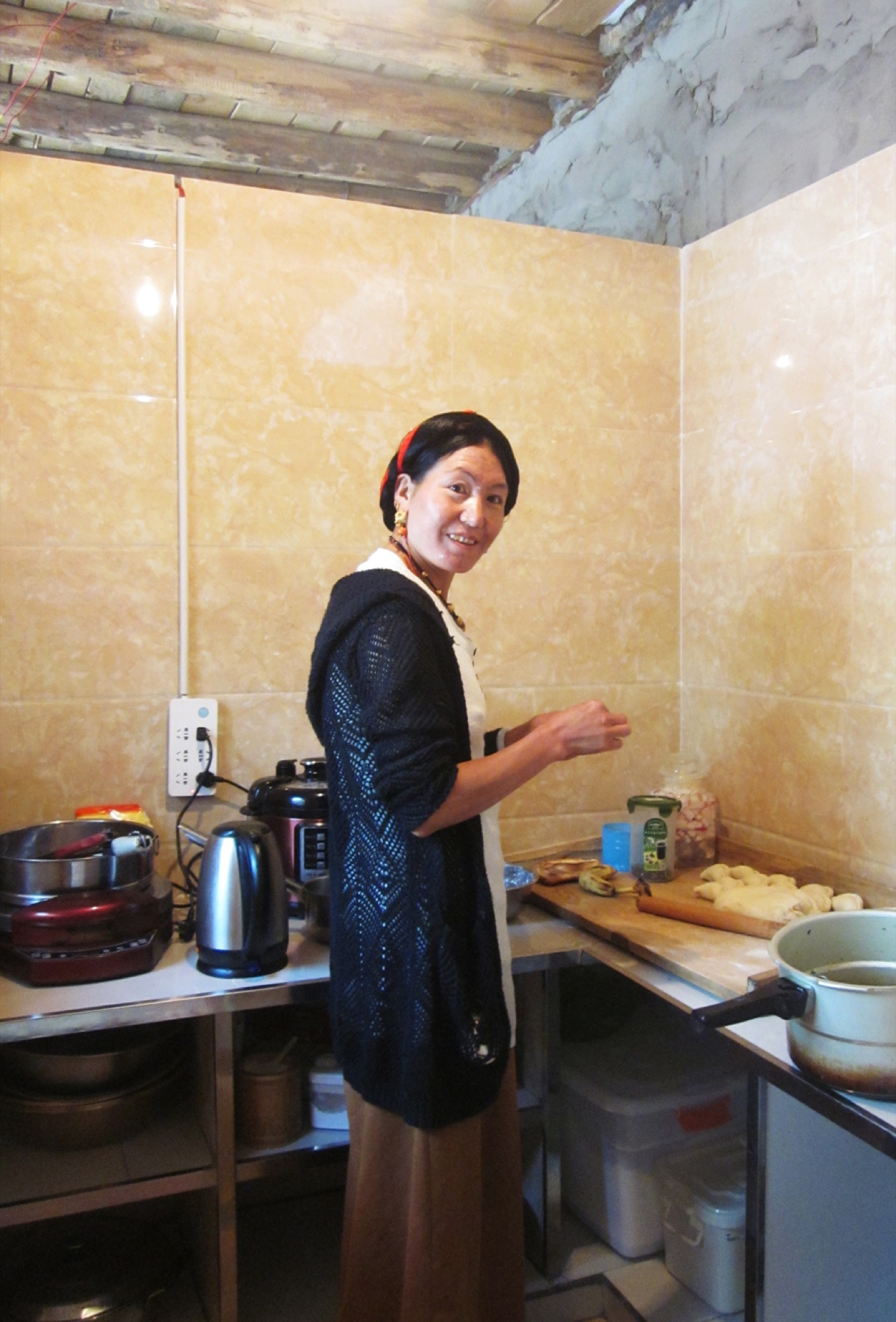The day broke up there, above 25,000 ft, among sleepy co-passengers with the high rise of Chengdu fast fading below and the approaching undulating earth. As the plain was left behind and the earth became rocky, a never seen before surface greeted with its spectacular other worldliness and the first ray of sun fell on both, on the vast valley below and on my face. The flight to Kangding being an early one certainly had its benefits at the cost of little to no sleep last night and the over whelming visuals all around was absolutely worthy for that small price. Although the plane is headed for one of the highest cities of the world which is also the roof of the World, Lhasa, I was to depart midway at Kangding, China’s second highest airport. As the plane lowers, the plateau welcomes with dry desert like horizon, shinning sharply in morning sun with a breeze picking up fast and was felt like a blow on the first instance. As the crowd thinned, two of my local pals with their broad welcoming smile came running for a hug and we soon found ourselves in the jeep driving towards the village “Dora”. While the immediate landscape was of a fading airport town which was rather small, an elaborate left turn from a grand roundabout put us on a comparatively narrow but well-built road that went straight ahead as long as our vision goes. Hills were all around with short and even shrubs and occasional blooms that added a certain greyish purple to the upward field in patches. Our chat was mostly to do with my endless questions and receiving answers that never seemed enough! Soon we entered a market town bustling with people from nearby villages. Women with children on their back with blowy nose and un kept hair, porters with their loads on back and carts, walking fast, giggly young men and women in street corners with earphone connecting them to their friend’s smartphone and elderly ladies slowly walking past with their praying wheels. Our tidy and small eatery gave us a large bowl of soup which three of us shared with Tingmo (Tibetan flour bread). We ate quietly as all of us were hungry and needed to polish it off fast to get back to roads. We have 175 Kms of travel ahead of us before we reach Dora. As the mid-day is over, the market place suddenly looked a lot less crowded, my friends quickly finished their after lunch smoke and we were off again!
Travelling deep into Garze Autonomous Prefecture, Sichuan
As the jeep picked speed, as my hungry eye was stuck in the window, the stretch we were passing was again a straight road with hillocks with occasional signage in Chinese and Tibetan. We soon took a turn to a narrower road which is certainly very decently motorable but was not as smooth as we drove till now from the airport. With tolerable potholes came a sudden change in our surroundings. Breeze became stronger as one can measure that from the endless praying flags around us that stepped up its rhythmic flip flap against the steep air like a recurring hymn. A bit of cloud was gathering here and there with a tints of dark grey in them. Empty roads, constant breeze that buzz like a bee and the gathering clouds were now added by never seen before visual. Hills around us that were mostly quite with its green shrub cover now have enormous replica of Stupa that is made by criss-crossing praying flags. A rather two dimensional gigantic form slowly trembling against the breeze in its otherwise calm existence was undoubtedly a formidable sight. We came across few more of them and then we left them behind.
Dora’s picturesque welcome
The approach to Dora was mostly like any other small villages that we passed by. We took a right and came across few more houses, couple of shops, people sitting in front them and we stopped in front of a double storied house. Built robustly with dark greyish slates, ornate windows with carved frame and borderlines defining floors is the house owned by Tenpa Tsering. He is my local host and drove me from the airport. Tenpa’s better half Tenzing and daughter Sezma showed me to my room which is a large dorm with two row of beds. Mine was the 2nd last which had two generous sized quilts and a pillow. I shelved the idea of taking a closer look at Tenpa’s house for later as I thought I will have ample time for it. We headed out for the village as soon as we were served with steaming mug of Jasmine tea.
A walkthrough of Dora’s artisan households
Dora’s unknown and negligent roadside wild flowers are beautiful too. Our walk that has definitive destinations are otherwise slow with casual chats. We are to visit couple of households where family members (mostly women) are skilled artisans. The first house we are nearing is a grand three storied village house in distinctive Tibetan style. Against vast horizon, broken cloud, pleasing breeze and afternoon birds chirp, we walk past the metal road to get to the house. An unkept sleepy Tibetan Mastiff with a long chain, few clueless yaks and a lady hurriedly stocking her farm collections, as we enter the house. Massive granary containers welcome us and leads us to a rather dark and steep stairway to the first floor. We are greeted by almost all the family members except the children who were off course busy playing. The living room is significantly large; walls, shelves and pillars are made of local wood with simple polished surface. The room has three sections, the kitchen, a square low sitting area very next to it and a lounge space for watching television and entertaining guests. The kitchen is a live one with season’s yak meat being dried by hanging them around the central oven, the dining table is a combination of hot plate and surrounding surfaces with ample space for serving food. My first cup of salted Yak butter tea arrived. With a sip, I start looking at the specimens of local weaves. Simple back strap looms are owned by almost all the families and women of the households have their own corners where they quickly finish the incomplete yardage for the upcoming winter, whenever they have spare time. Easy woven straps with basic dyes and simple geometric forms are expertly sewn together to make a wide range of things, pillows, festival coats, large tote for weekly market and waistcoats. While machine cotton has fast replaced the coarse Yak wool and fine ram fur, old woven straps are almost heirloom pieces, used mostly by the families for usages within home. We said au revoir to the family, the lady of the house waved a goodbye as she got back to her pass time of spinning and we hit the road to get to the next house against early dusk’s pink sky.
A day towards a Nomads village
Indigenous supply chains are always intriguing. While nearby market places had designated shops for weaving essentials, my interest lied to visit the nomad’s villages where I was told that the hand spun yak wool and ram yarn comes from. Often through barter against grains and pulses, the nomad’s communities supply their carefully spun yarns from the live stocks they rear. Our early morning start from Dora to the nomad’s village was greeted by farmers on their way to the fields and children with waving hands on their way to school. We soon came in company of a turbulent stream that joined us immediately after we left the village. It soon disappeared as we took an upward right turn where the road became narrower with tolerable potholes returning. We noticed a sudden change…quietness. The only noise of the stream disappearing behind and our surrounding losing its vastness as the hills on both sides come closer. Morning’s sharp sun too gets a cloudy cover with the air suddenly dropping gave us a sense of eeriness. We discussed Tibetan system of sky burial as we passed through a ritual ground not far from the road. I could figure the stillness in the air with one or two vultures swirling above. We soon crossed the valley that seemed a bit grumpy and came out to a sprawling vista. The patchy clouds accompanied, the left behind rocky and narrow horizon turned into a green valley with numerous colours in uneven placements undulating in gentle breeze. There was a temperature drop in the air as we drove a bit of altitude, the green surface with endless seasonal flowers stayed with us for another two hours of constant drive. The valley of flowers soon turned into a land with haphazard streams dancing down with countless tributaries. All along we encountered no human being and the more we drove the more surprises and pristine nature keeps unfolding. The next patch of journey offered a bigger surprise with opening up of a massive dune like fields covered with green grass in various tints and shades. The cloud now started to clear and pristine sun fell upon the valley like a first touch of light from above. The sheer expanse of the ground was spell bounding as we kept moving with our new company of large packs of grazing yaks and sheep.
Couple of miles further drive and we could see approaching dots which from far seemed like a round patch on the green field. As we neared, we saw these are makeshift huts. Made with twigs, tattered tarpaulin, and Tibet’s much celebrated Black tent material which is very dark brown yak wool, these huts are temporary home for the nomads who flock this region in the summer. They are herders, while their livestock roam freely in the land’s vast valley, family member’s trek long distances to collect firewood for cooking their evening meal. We visit a house; get greeted by the lady who just returned from nearby woods, we all sit together near the fire, she makes butter tea for us, and we sip in the tea as we talk. I take a quick look at her humble hut with her permission. Frozen meat, last season’s butter, a separate room for the family to sleep in the night, a sitting area for the day time and that was her most compact and cosy house for few months. Little windows overlook the valley and her neighbours huts. We thank her for the tea and the time as we leave.
Tibet’s Black Tent and the departure
Our departure from the nomad’s village had a break in between for a quick lunch. This lunch was one of my most memorable. Under the cleanest blue afternoon sky, amidst the ups and downs of the vast valley, we stopped to unpack our ready to cook noodles and drank Jasmine tea from flask. On our way back to village Dora, we at last saw two fine specimen of Black tent. One of them is used as a front portico cover in a lonely monastery and a proper tent on a deserted ground against a magnificent snow peak. My departure day came near. Our farewell meal was with Tenpa’s family and my friend Kondro from Chengdu was at a popular eatery in a nearby small town. The eatery was in the middle of the market and just above a stream. As we do a cheers with local wine accompanied with numerous finger foods, I looked out to gauge the light. It was late dusk with hardly anyone in the market. The light was soft with one or two street lights coming up. The sky was gloriously pink in the very last layer of the horizon with no trace of any cloud. There was a chorus of the flowing stream and an evening bird. Some music was floating faintly from a shop at the end of the market. Few passers-by turned into walking silhouettes as they moved far. Without thinking much about how do I contain this gem of an experience of coming to this part of the world, I quickly went in to join Tenpa’s family to complete my farewell dinner.

